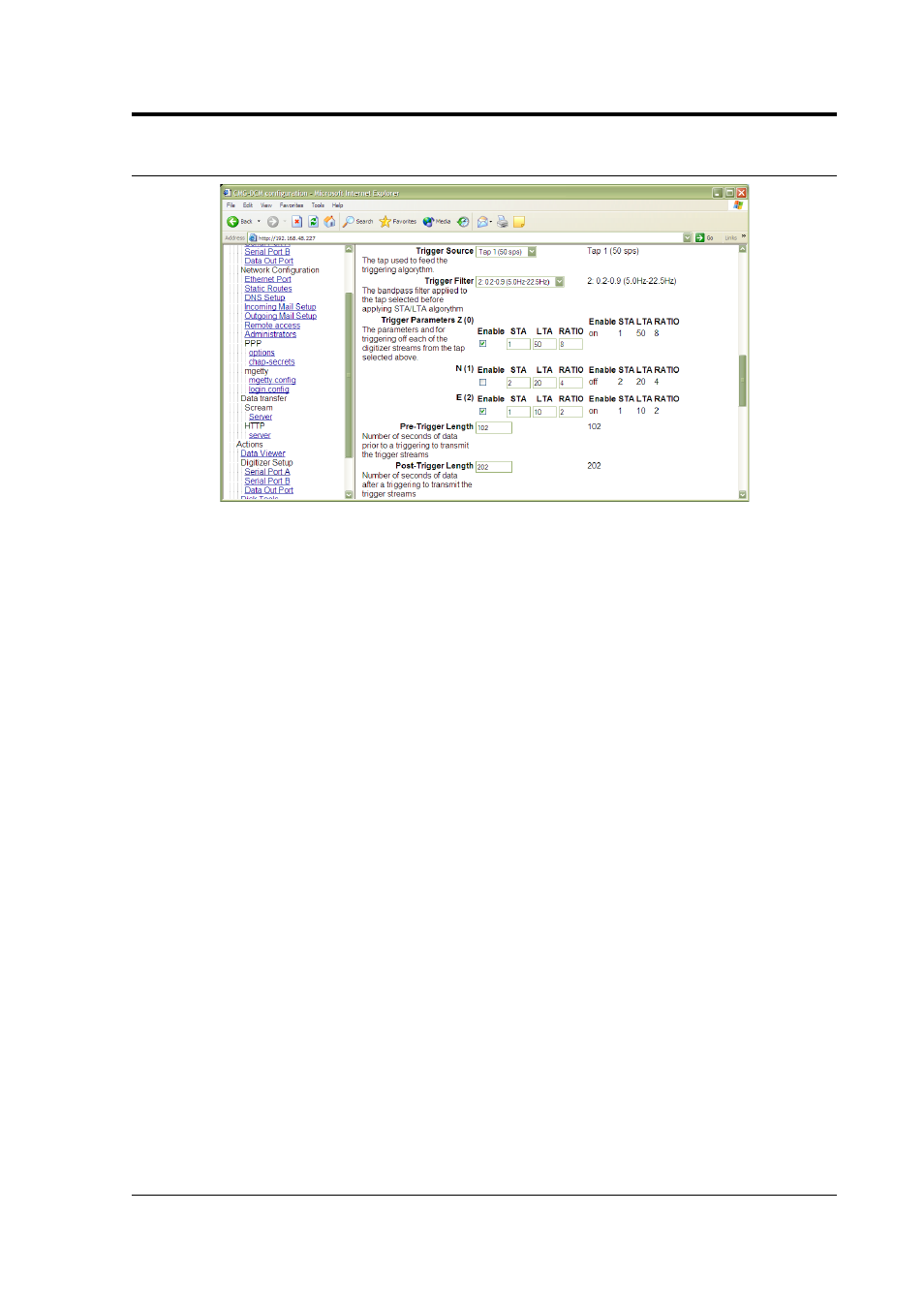3 trigger criteria – Guralp Systems CMG-DCM User Manual
Page 109

Operator's guide
7.3 Trigger criteria
The triggering algorithm applies a simple short-term average / long-
term average calculation to the triggering stream. It works by
identifying sections of an incoming data stream when the signal
amplitude increases. The purpose of taking a short term average, rather
than triggering on signal amplitude directly, is to make it less likely
that spurious spikes will trigger the device. Averaging also introduces
an element of frequency selectivity into the triggering process.
You can select which tap is tested for the trigger from the Trigger
source drop-down menu. The tap does
not have to be selected for data
output for you to be able to use it here.
The next option, Trigger filter, allows you to apply a bandpass filter at
this stage (see below.)
Any or all of the channels available at the tap you have selected may
be used to determine a trigger. The next part of the window lists the
channels, each with Enable, STA, LTA and Ratio settings. The Enable
boxes determine which channels are considered for triggering. If
any of
the checked channels passes the trigger condition, the trigger will
activate, and will not detrigger until
all of the checked channels have
fallen below their respective Ratio values.
The STA and LTA columns allow you to set the intervals over which
the two averages are calculated, in seconds. Typically, the time
interval for the short term average should be about as long as the
signals you want to trigger on, while the long term average should be
taken over a much longer interval. Both the STA and LTA values are
recalculated continually, even during a trigger.
December 2006
109
